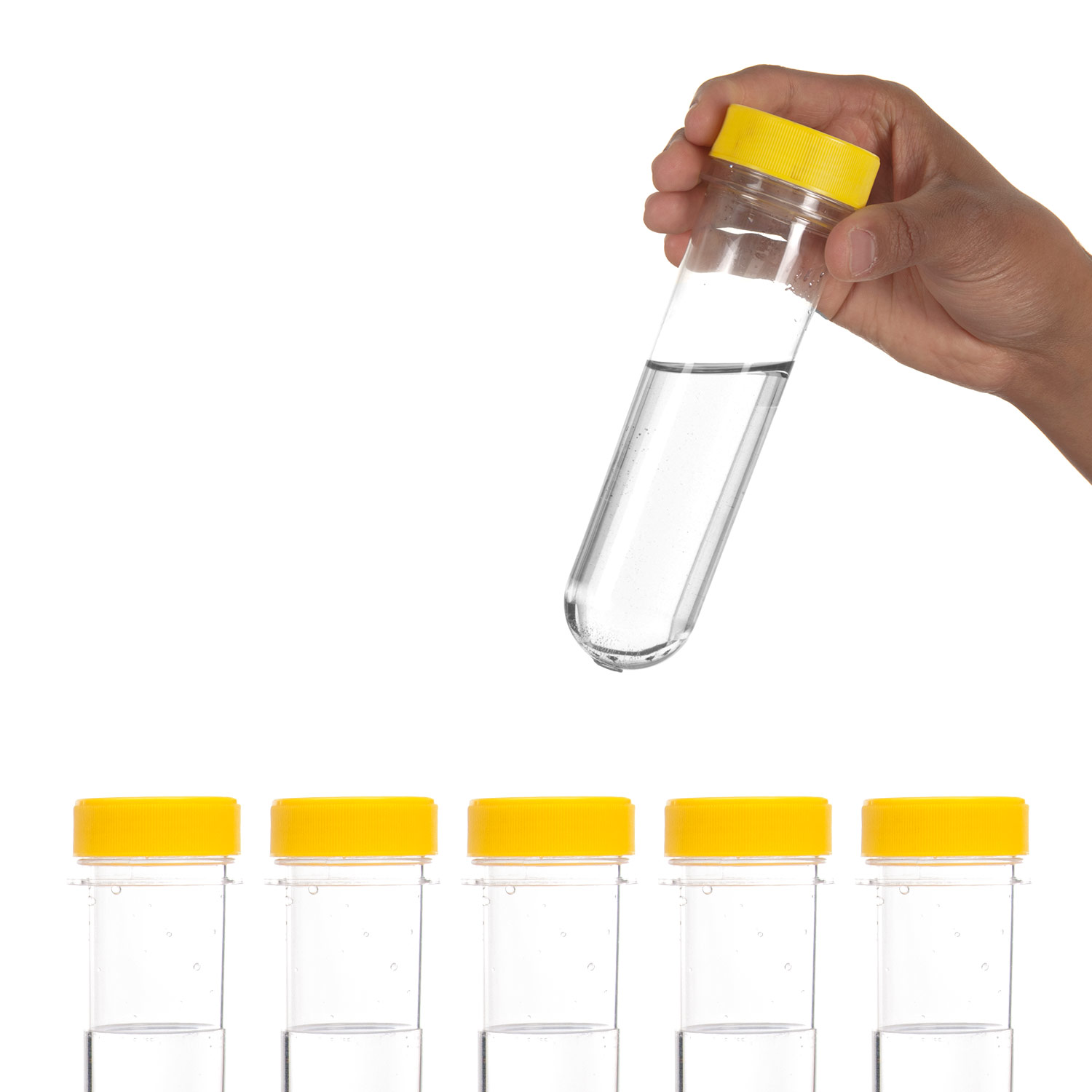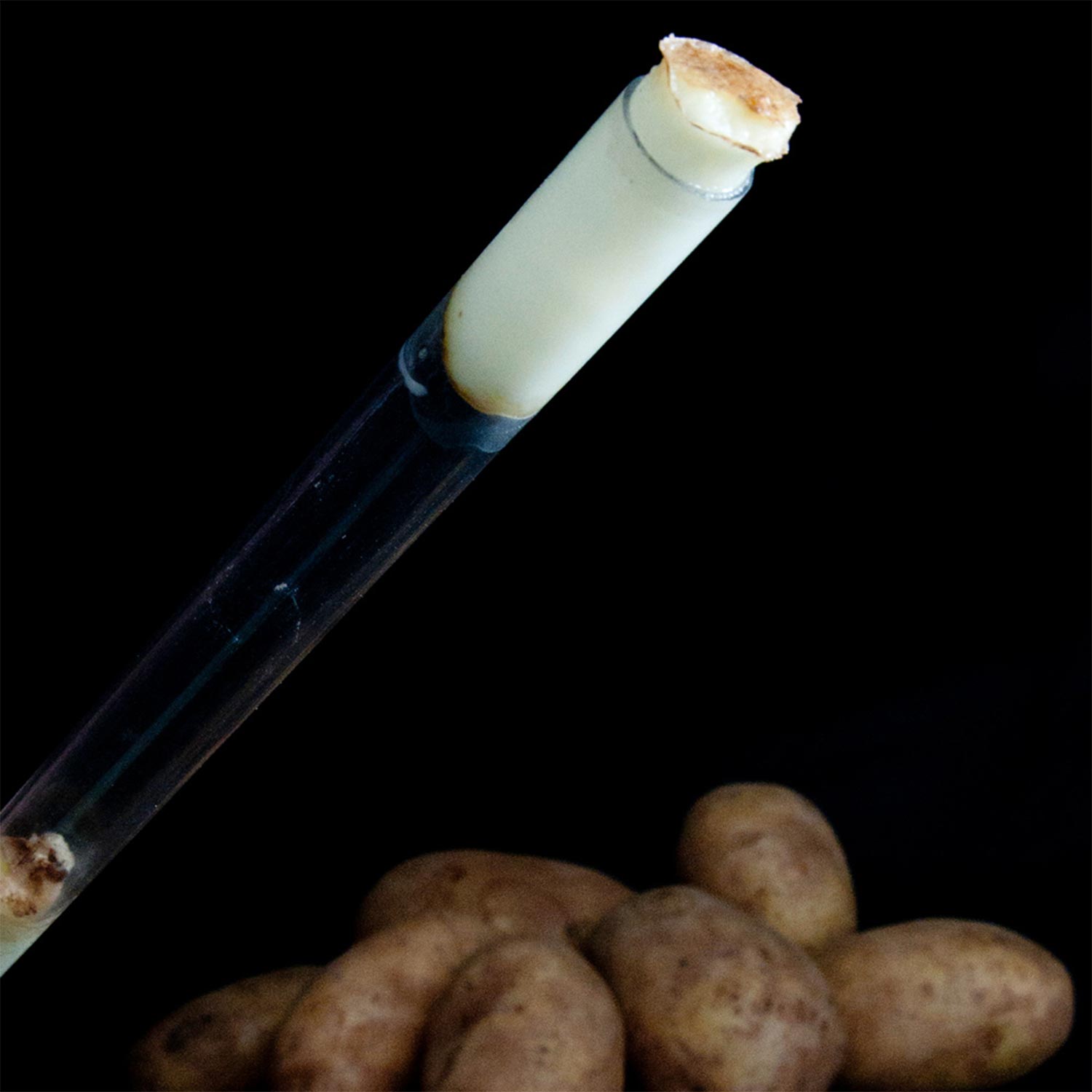- Special String Slime that contains a thermochromic color-changing dye
- Explore the science of building polymers
- Learn about heat sensitive thermochromic materials and dyes
SKU: WORM-350
SKU: WORM-350

Our Slime-ologists Have Made an Exciting New Kind of String Slime that Is Heat-Sensitive!
When the Spangler Labs team came up with String Slime, it was an instant hit. Now, you won’t believe your eyes as temperature changes the appearance of this special new kind of String Slime!
Just squirt the blue or magenta liquid into the bowl of Activator, and watch wiggly strings of slime appear right before your eyes! The special formulation holds a secret. When the string warms up to a certain temperature, it loses its color. The pigment in the slime is heat-sensitive. To bring back its original color, just put the string slime in cold water.
How does it work?
When you make String Slime, you’re learning about the science of polymers. The creative folks at Steve Spangler Science coined the term “String Slime” but the real name of this liquid is sodium alginate. Sodium alginate is a long chain of identical molecules called a polymer.
Make a science fair connection
All you need to do is identify and change a variable, or factor that can be altered, to create a memorable science fair project. For example: Find the quickest way to cool or heat the string slime to its color-changing temperature.
When It Comes to Cool Science Demonstrations, the Heat-Sensitive Strings are Pretty Awesome
Experience String Slime in a variety of new colorings, better reaction time, and slimier insides. In this batch of String Slime, you’ll get an exciting new color-changing variation that changes right before your eyes.
String Slime Works Through the Magic of Polymers
Although String Slime starts as a liquid, through polymerization (the formation of polymers), the liquid becomes a solid and looks just like a long string. Heat-Sensitive String Slime also features a thermochromic dye that reacts, quite colorfully, to changes in temperature. You get enough materials to make about 160 ft (49 m) of Heat-Sensitive String Slime!
What Does It Teach?
Young scientists will explore the science of building polymers by cross-linking long chains of molecules while also learning about thermochromic materials and dyes.
Colorful Carbon Chains in Action
Children can experience the amazing behavior of polymer chains with the Blue Color-Changing Heat Sensitive String Slime™ kit from Steve Spangler Science. Polymer chains are simply molecular chains formed by the bonding of repeated units of carbon compounds, and they can get so long that only one molecule of polymer is quite visible without a microscope. When the activator in this kit is poured into water and the blue liquid is added, polymer chains that look like wiggly worms appear as the carbon units bond, and children can see the actual formation of the chain. They’ll also learn about thermochromic substances like the blue dye in the liquid since they can see the wiggly worms change color when they become warmer. They can also do color changing experiments with different temperatures to see different shades, too.
What’s Included?
You get enough materials to make about 160 feet (49 meters) of Heat Sensitive String Slime!
String Slime works through the magic of polymers. Although String Slime starts as a liquid, through polymerization (the formation of polymers) the liquid becomes a solid and looks just like a long string. Heat Sensitive String Slime also features a thermochromic dye that reacts, quite colorfully, to changes in temperature.

 Potato Launcher
Potato Launcher
Joyce R. –
This has a great Ooh! Aah! factor… Pink in the bottle, white in the activator solution! And to bring the color back, just change the temperature. I am using it to help as a visual for polymers being long chains that can easily tangle.
(0) (0) Watch Unwatch
Heather Matheny –
Had a great time making the worms then watching them change in warm and cold water, even noting that cold had different effects, the lower the temperature the darker the pink!!
(0) (0) Watch Unwatch
Dawn Klemm –
These were awesome. Bought them for my nieces Science Birthday Party. The kids (age 10-11) loved them but they are a quick experiment so it didn’t hold on to their attention for long. However, most of the kids wanted to take some of there worms home (I gave them tests tubes to secure them in for the trip). A little pricey for a quick experiment. You get more bang for your buck with the Boo-Bubbles. Definitely worth the buy if you can get them on sale.
(0) (0) Watch Unwatch
Question
Joanna –
How long do the worms last? Do they dissolve eventually?
(0) (0) Watch Unwatch
Staff lisabrooks –
The worms will eventually dry up and become hard. Once they are in this state, there is not much you can do with them. Until then, the kids can enjoy squishing them together, making long strands and writing their name with the worms, etc. It will take several hours for them to dry out. You can store them in a zipper-lock bag in the fridge if you want them to last a little longer.
(0) (0)
Question
David Z –
What is the proper disposal method for any leftover (unpolymerized) solutions?
(0) (0) Watch Unwatch
ablock –
We do not recommend throwing excess polymer solutions down a drain but they be thrown directly into the trash when you are done with them.
(0) (0)